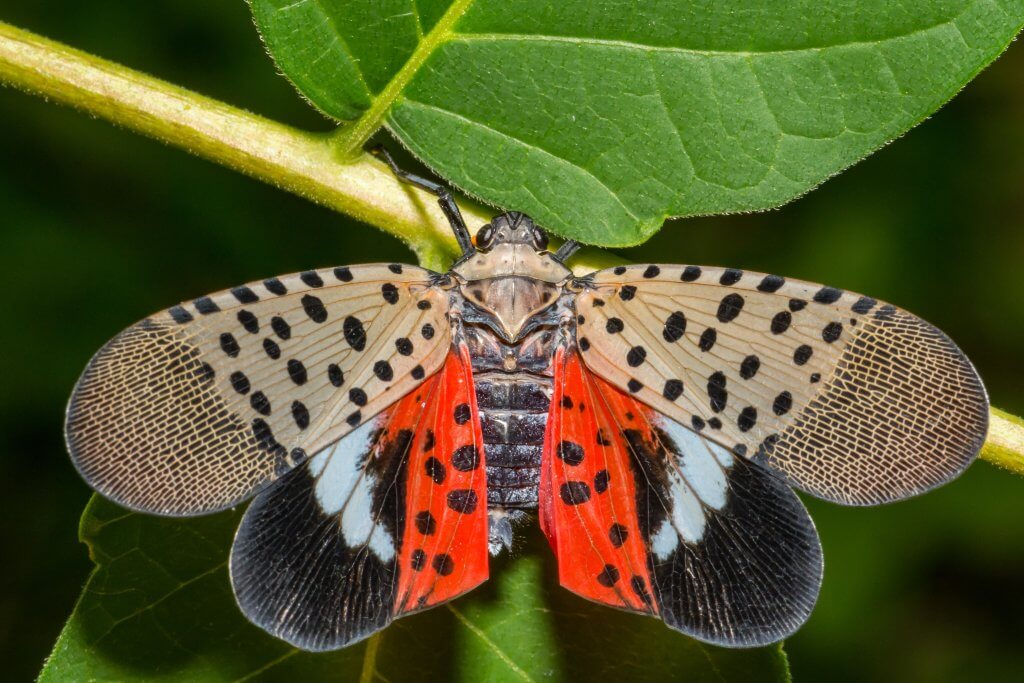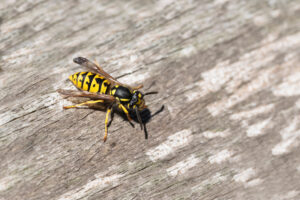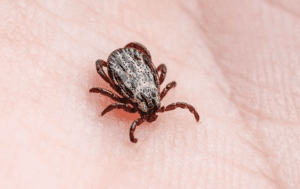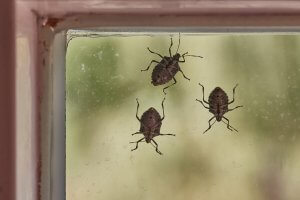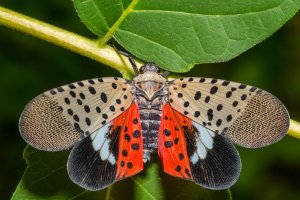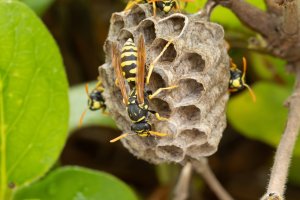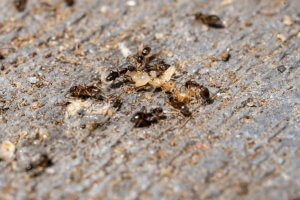If you live or run a business in Worcester, Framingham, Northborough, Concord, or anywhere else in Central Massachusetts, you may have started hearing about a striking but destructive insect called the spotted lantern fly. At first glance, this insect looks almost pretty with its spotted wings and bright red underwings. However, the damage it can cause to trees, vineyards, landscaping, and even outdoor dining experiences is anything but charming. At Bug Bully Rodent & Pest Control, we specialize in helping communities deal with invasive pests like the spotted lantern fly, and we want to share what every homeowner, apartment renter, and restaurant owner needs to know to protect their property and livelihood.
This article will walk you through what spotted lantern flies are, why they matter in Massachusetts, how to spot them, how they impact both homeowners and restaurants, and most importantly, what you can do about them with proper spotted lantern fly control.
What is the Spotted Lantern Fly?
The spotted lantern fly, known scientifically as Lycorma delicatula, is an invasive insect originally from Asia. It first appeared in Pennsylvania in 2014 and has been spreading steadily across the Northeast ever since. Massachusetts confirmed its first infestations in 2021, and Central Massachusetts has become an area of growing concern.
The spotted lantern fly feeds on a wide variety of plants, with a strong preference for grapes, fruit trees, hardwoods, and a tree called the Tree of Heaven. It uses its piercing-sucking mouthparts to draw sap from plants, which weakens them over time. Worse, it excretes a sticky substance called honeydew that encourages mold growth and attracts other pests.
Why Spotted Lantern Flies Matter in Central Massachusetts
For homeowners, apartment renters, and restaurant owners, spotted lantern flies are not just a backyard nuisance. They are a threat to the environment, landscaping investments, and outdoor quality of life.
In Worcester and nearby towns, the combination of trees, orchards, and landscaped properties provides perfect feeding grounds. Restaurant owners who depend on patios or outdoor seating know that the last thing customers want during dinner is a swarm of colorful but bothersome insects landing on their plates or buzzing around drinks.
Grapevines and fruit orchards in Concord and surrounding areas are also at risk. Even if you don’t own a vineyard, your landscaping trees, garden, or even potted plants on your porch could become infested. Once they arrive, they are not easy to remove without professional spotted lantern fly exterminator services.
How to Identify a Spotted Lantern Fly
Identification is crucial for early spotted lantern fly control. They look different depending on their stage of development:
- Eggs: Found from late fall through early spring. They appear as gray, mud-like patches on trees, outdoor furniture, fences, or even vehicles.
- Nymphs: Hatch in spring and go through four stages. Early nymphs are black with white spots, while later nymphs are red with black and white markings.
- Adults: Appear in late summer. They are about an inch long with gray forewings covered in black spots, and bright red hind wings that flash when they fly.
If you see them, do not ignore them. Contacting a spotted lantern fly exterminator is the best step to protect your property.
The Impact on Homeowners
Homeowners and renters often first notice spotted lantern flies when they gather in large numbers on trees, decks, fences, or outdoor siding. They don’t bite humans or pets, but their presence is unpleasant. The sticky honeydew they produce can drip onto patios, outdoor furniture, cars, and even sidewalks, leaving a residue that is difficult to clean. This honeydew also encourages black sooty mold, which stains and damages surfaces.
For those who enjoy gardening, spotted lantern flies are more than an eyesore. They can weaken grapevines, fruit trees, and decorative trees, reducing growth and threatening your investment in landscaping.
The Impact on Restaurants
Restaurant owners in Central Massachusetts face unique challenges with spotted lantern flies. Outdoor dining has become a staple in places like Framingham and Concord, especially during warmer months. Unfortunately, the presence of these pests can quickly ruin the dining experience. Customers may find insects landing on tables or hovering around drinks. Worse, sticky honeydew can drip onto umbrellas, railings, or patio seating, making cleaning a constant chore.
Beyond the nuisance, restaurants with ornamental trees, planters, or even small herb gardens may find these pests feeding on their greenery. The impression left on diners can be lasting, and not in a good way. Calling a spotted lantern fly exterminator before the problem grows is essential for protecting your business’s reputation.
Spotted Lantern Fly Control in Massachusetts
Controlling spotted lantern flies is not as simple as swatting a fly or spraying a can of bug repellent. Because they reproduce quickly and travel by laying eggs on vehicles, outdoor furniture, or equipment, they can spread easily from one property to another.
Professional spotted lantern fly control in Massachusetts often includes:
- Inspecting for egg masses and carefully scraping and destroying them.
- Applying treatments to trees and plants to reduce infestations.
- Targeting vulnerable areas like outdoor dining setups, decks, and fences.
- Educating property owners on how to recognize and report infestations.
At Bug Bully Rodent & Pest Control, we take an integrated approach, using safe, effective methods that minimize disruption to your home life or business.
Fun Facts About Spotted Lantern Flies
- Despite their name, they are not strong fliers. They mostly hop and glide short distances.
- Their favorite host plant, the Tree of Heaven, is also an invasive species from Asia.
- They can hitchhike long distances by laying eggs on cars, trucks, or outdoor furniture.
- Spotted lantern flies have been called “plant vampires” because of the way they suck sap.
- The bright red color on their wings is a warning signal to predators, though few creatures in Massachusetts eat them.
Common Questions Answered
Do spotted lantern flies bite people?
No, they do not bite or sting humans or pets. The main concern is the damage they cause to plants and the sticky mess they leave behind.
Why are they in Massachusetts now?
They arrived accidentally, most likely on shipping materials or vehicles traveling from states where they were first introduced. Once established, they spread quickly across the Northeast.
Can I remove spotted lantern flies on my own?
Homeowners can scrape egg masses or squish visible adults, but infestations are rarely controlled without professional help. A spotted lantern fly exterminator has the tools and expertise to tackle the problem effectively.
Will they kill my trees?
While they may not outright kill large, healthy trees, they can weaken them significantly. Smaller trees, grapevines, and fruit trees are especially vulnerable. Weakened plants are also more susceptible to disease.
How can restaurants protect outdoor dining areas?
Restaurants can work with a pest control company to treat nearby trees and plants, monitor for eggs, and maintain outdoor areas. Regular cleaning of honeydew and mold is important, but long-term spotted lantern fly control is best achieved through professional management.
The Long-Term Outlook in Massachusetts
The spotted lantern fly is not expected to disappear anytime soon. Massachusetts, with its mix of hardwoods, fruit trees, and urban landscaping, offers plenty of habitats. The key is learning to manage the pest population and minimize their impact on homes, businesses, and agriculture.
Local communities in Worcester County and Middlesex County have already begun raising awareness, and state agricultural agencies encourage residents to report sightings. Collaboration between property owners, businesses, and pest control professionals is essential to keeping infestations under control.
What Bug Bully Rodent & Pest Control Recommends
If you’re in Worcester, Framingham, Northborough, or Concord and have spotted lantern flies, the most important step is not to panic. Instead, take action quickly. Here’s what we recommend:
- Learn what they look like in every stage of life.
- Report sightings to the Massachusetts Department of Agricultural Resources if infestations are significant.
- Schedule a professional inspection.
- Let us design a treatment plan tailored to your property, whether it’s a single-family home, an apartment complex, or a restaurant with outdoor seating.
Our goal is to protect your property and peace of mind while reducing the spread of this invasive species.
A Final Word
Spotted lantern flies have brought an unwelcome challenge to Central Massachusetts. Whether you’re a homeowner in Northborough worried about your backyard trees or a restaurant owner in Concord trying to preserve a pleasant outdoor dining experience, these pests can disrupt daily life. The good news is that with vigilance, awareness, and the help of a professional spotted lantern fly exterminator, you can safeguard your property.
At Bug Bully Rodent & Pest Control, we are committed to helping our community adapt to this new challenge. Together, we can make sure that the spotted lantern fly becomes more of a curiosity than a catastrophe.

